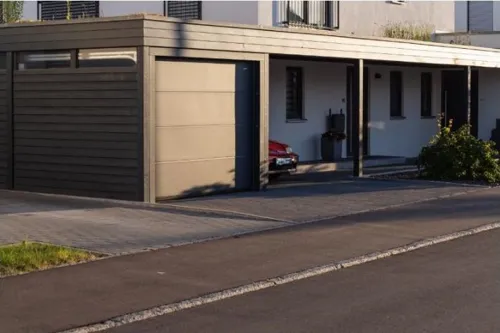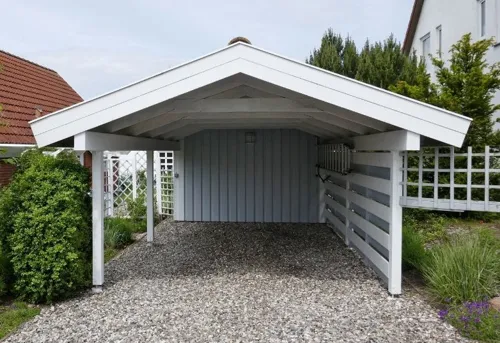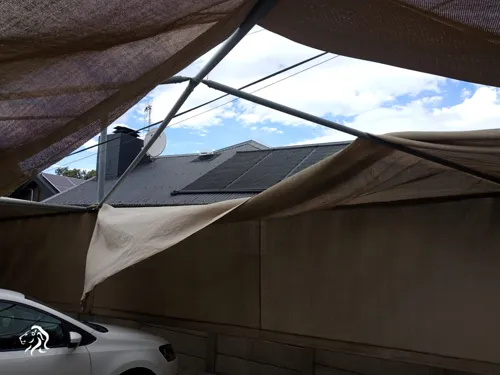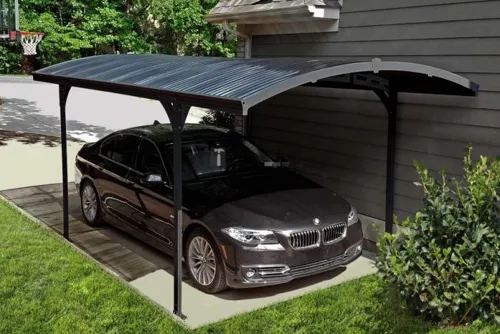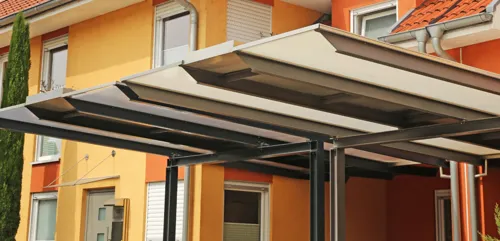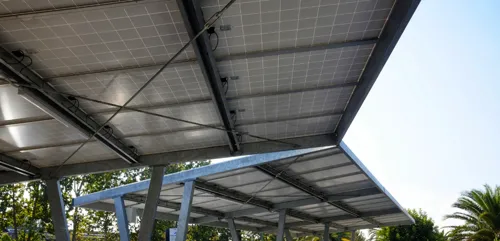Carports are a low-cost way to protect your car. Building them, however, can be a challenge if you are not DIY savvy or have no clue where to start. We will go over the best materials to use for your carport.
The materials you pick will affect more than just the looks of your carport. They are vital for strength and durability. How to pick them?
1. Pick the material for a carport frame
First, we’ll look at the best materials to use for your carport and then look at the coverings you should consider using.
Best materials for a carport frame - comparison
| Material | Cost | Strength and Durability | Maintenance | Life expectancy |
|---|---|---|---|---|
| Steel | most expensive |
strong | needs regular rust inspection | 25 years and more |
| Aluminium | cheapest | very durable | almost none | 25 years and more |
| Timber | can be pretty costly |
the least durable | requires regular maintenance | 15 years and more |
Aluminium
Aluminium is the best material to use for your carport in most cases. It is a cheaper alternative to steel that is strong and durable. The fact that it is also lightweight means it will be easy to assemble your carport.
Another great benefit of aluminium is that it is doesn’t require much looking after, and it is highly resistant to corrosion. It comes with a 25-year life expectancy, and it is close to 100% recyclable.
You can also use aluminium sheeting as your carport covering to complete the look of your carport.
Get free quotes fo an aluminium carportSteel
The robustness and durability of steel will make for a strong carport, but all the material required could become expensive.
The big issue with steel is that it will require a fair bit of maintenance. Your steel will need to be either powder coated or galvanised to prevent rusting. On top of that, you will need to inspect it regularly to ensure there are no rust spots.
Get free quotes fo a steel carportTimber
The last type of material you could use for your carport is timber. Timber has several benefits, top of which would be the aesthetic appeal it brings.
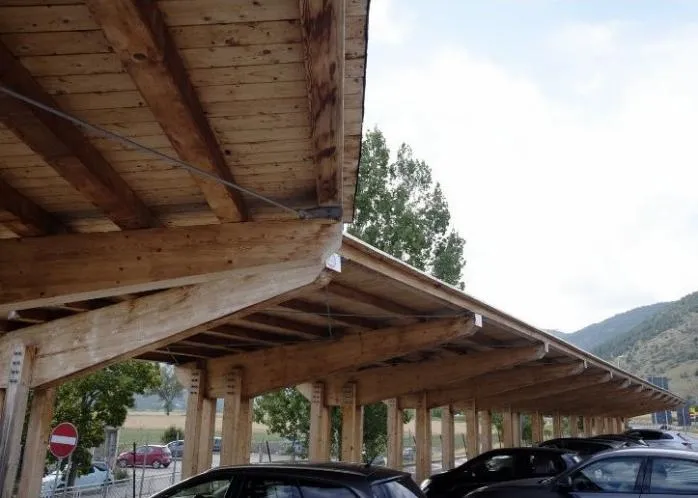
For all the benefits you get from timber, it can be costly to prepare and maintain. Untreated, your carport will be at risk of rotting, warping or splitting. Depending on the size of your carport, all the treatments required might make timber the least cost-effective option.
You can also use timber for more than just the frame of your carport. Timber slats are the perfect covering for timber-framed carports, but you will need to get them treated just like the frame to prevent rot.
Get free quotes fo a wood carport2. Pick the material for carport covers
Now that you know what materials to use for your carport frame, we’ll look at the covers you can use to complete the structure.
Polyethylene (PE)
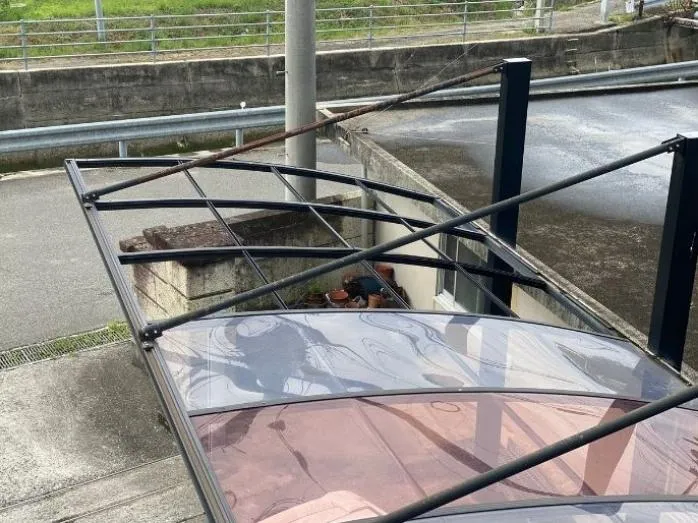
Polyethylene is a very common carport covering. It is a hard-wearing plastic weave that’s waterproof and low-temperature resistant. PE is also lightweight and easy to transport, so it’ll make your project that much easier.
Polyvinyl chloride (PVC)
Another popular carport covering is PVC sheeting. This material is very durable, waterproof, and low-temperature resistant. A great benefit of PVC is that it has an excellent strength to weight ratio, which makes it perfect for standing up to the elements.
Be careful how and who you trust to build your carport. A poorly made structure will be a danger to you, others, and your vehicle.
If you’re not sure you can do it alone, don’t hesitate to get a professional hand.
